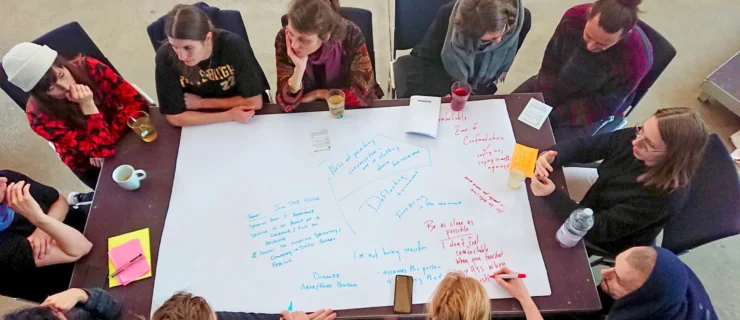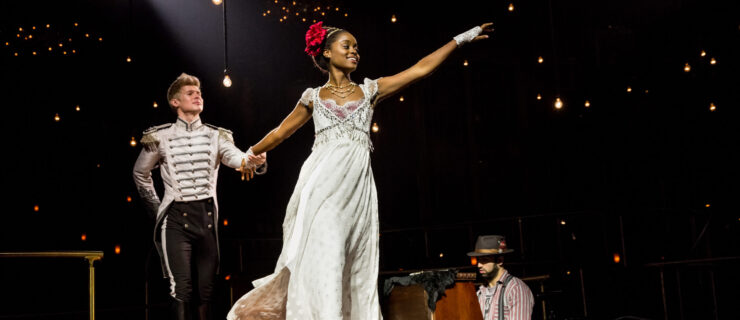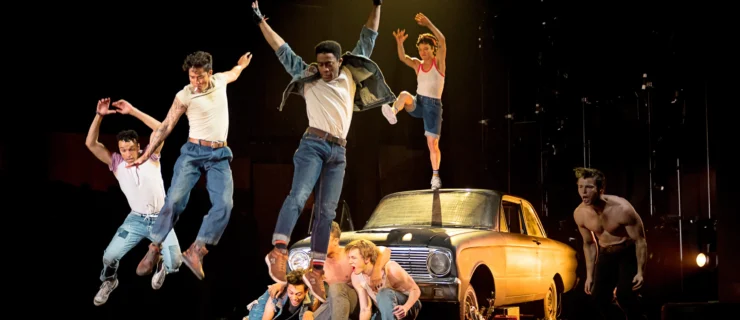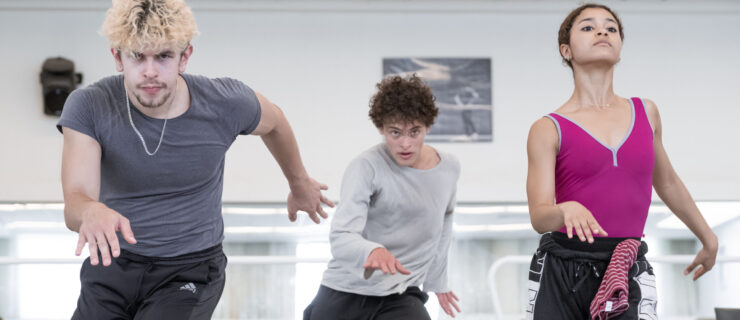Richmond Ballet
Richmond Ballet
The Joyce, NYC
April 6–11, 2010
Reviewed by Wendy Perron
Colin Connor’s
Vestiges. Photo by Aaron Sutten, Courtesy Richmond Ballet.
While other companies scramble to acquire works by the hottest choreographers, Richmond Ballet has quietly commissioned a number of pieces that have endured. The company brought six of these to New York. (Program A presented works by artistic director Stoner Winslett, Jessica Lang, and Mauricio Wainrot.) If there was an overall theme of Program B, it was that men and women need each other to get through hard times—or just to feel whole.
Val Caniparoli’s Violin opens with five men in a circle with one arm stretched on a high diagonal, wrist bent like a hairpin. A lone, ignored woman in dimness outside the circle walks downstage and off right. The men are strong, grounded, and lifted. The next section, for the women, is lighter and swifter. Wonderful duets ensue, with intricate lifts where the men sometimes take a step back to arch deliciously and send out that one arm with hairpin wrist. That motif, which at first expresses strength, curiosity, and idiosyncrasy, was repeated way too many times. But Violin was well-crafted and, like other Caniparoli works, had a satisfying coherence. Naturally the piece ended with the men and women together in the circle, blending qualities.
William Soleau’s Misa Criolla (titled after Argentine composer Ariel Ramirez’s music) focused on a central couple that seemed to be mourning—perhaps for the loss of a child. The four other couples engaged in spirited partnering, making good use of some benches. Misa Criolla had a more gracious, earthy quality than Violin but was less inventive. With the muted colors, women’s long skirts, and Latino choral music, the piece seemed influenced by Nacho Duato.
The pace stepped up for Vestiges, by Colin Connor, to pulsating music by Michael Nyman. Phillip Skaggs dashed on from stage right to left, stopping dead in his tracks to stare at a circle of light on the floor. Other dancers raced in, building the kinetic excitement. Again, in this ballet, the women helped the men out of whatever trouble they were in. At the end, all the dancers ran through that very circle of light that had stopped them cold in the beginning.
In this highly professional company, a few dancers stood out magnificently. Maggie Small positively glowed, no matter how small or large her movement was. Thomas Garrett, with his long and energetic body, sliced through space with flair. Skaggs, who was not especially articulate in Violin, sizzled in Vestiges.



